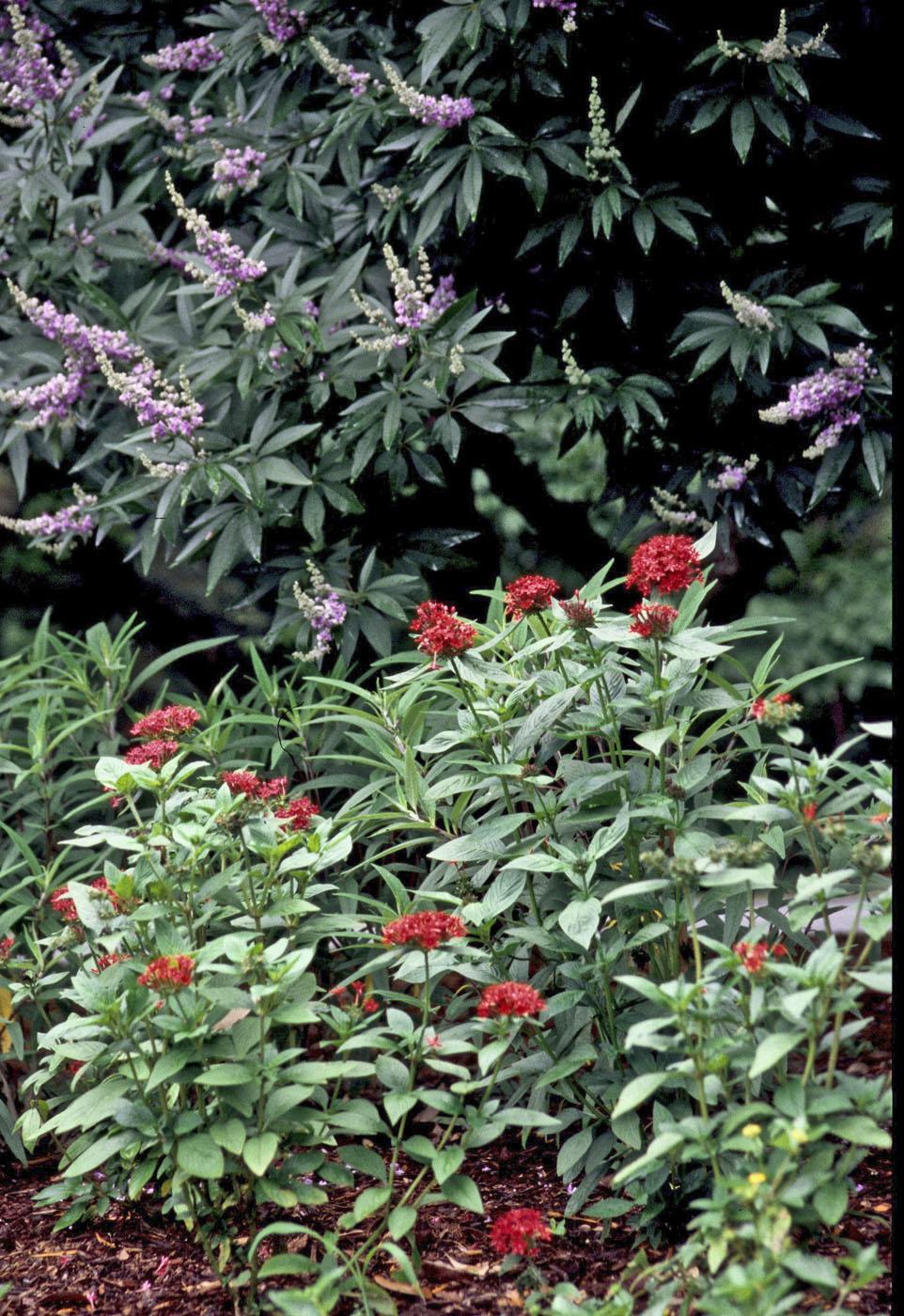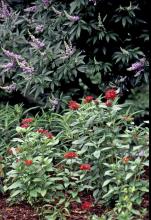Information Possibly Outdated
The information presented on this page was originally released on January 31, 2008. It may not be outdated, but please search our site for more current information. If you plan to quote or reference this information in a publication, please check with the Extension specialist or author before proceeding.
Lilac chaste tree offers many special qualities
By Norman Winter
MSU Horticulturist
Central Mississippi Research & Extension Center
The lilac chaste tree, or vitex, was chosen as a Mississippi Medallion award winner in 2002, spurring a revival of this great, old-fashioned plant, which some consider a small tree and others describe as a large shrub.
Known botanically as Vitex agnus-castus, the lilac chaste tree is a marvel with its small structure and large, marijuana-looking leaves. Its fragrant, blue blooms are rare among trees.
Centuries ago, the seeds that followed the blossoms were used to keep monks' libidos in check. It is said that in ancient Greece during the feast of the goddess Ceres, the women of Athens made their beds with the vitex leaves to cool lust and to keep themselves chaste for a time. Today, on the other hand, an extract from these plants is used to help women who want to become pregnant.
Vitex, or lilac chaste tree, is native to Sicily and is a member of the verbena family. It was recognized by the Greeks for its medicinal properties and has been in cultivation in British gardens since 1570.
For our purposes, the flowers attract butterflies and hummingbirds, making it ideal for the urban backyard wildlife habitat. About a year ago I ran into a combination planting so pretty that I lingered for some time shooting pictures from every angle, hoping to capture its beauty with my camera.
To be honest, my first thought was, “Why didn't I think of that combination before?” It featured the tall, cherry red heirloom pentas, or Egyptian star cluster. Today's leading varieties are much shorter, so those that reached 3 feet tall made impressive partners.
This combination looked tropical and a little patriotic with the red pentas and the vitex sporting blue and white. The white appearance on the vitex comes from the unopened flower buds. In addition to lilac blue, there are white and pink varieties of vitex, too.
This idyllic partnership was not only an aesthetically incredible sight, but it also featured two plants known to be major food sources for butterflies and hummingbirds.
We can grow the vitex as a small, elegant tree reaching 15 to 20 feet tall or keep it as a large shrub with regular pruning. As a shrub, it is at home in the perennial or cottage garden. As a small tree, use it as an accent or specimen. It brings added benefits as part of any wildlife habitat.
Choose a well-drained, fertile bed in full sun. Dig the planting hole two to three times as wide as the rootball, but no deeper. This wide hole allows for easy root expansion and acclimation in the landscape. The top of the rootball should be even with the soil profile.
Deciduous and easy to grow, vitex has virtually no pests or diseases, making it an environmentally friendly plant. Feed established trees in late winter with an application of a slow-release, 12-6-6 fertilizer per 100 square feet of planting area.
After the bloom cycle, remove old blossoms and give another light application of fertilizer. If you maintain adequate moisture, another bloom cycle will occur toward the end of summer.
The vitex is cold hardy to zone 6, meaning it can be enjoyed over much of the country. When nurseries and garden centers get them in, I hope you will take advantage of the opportunity to buy one. You will be glad you did.








